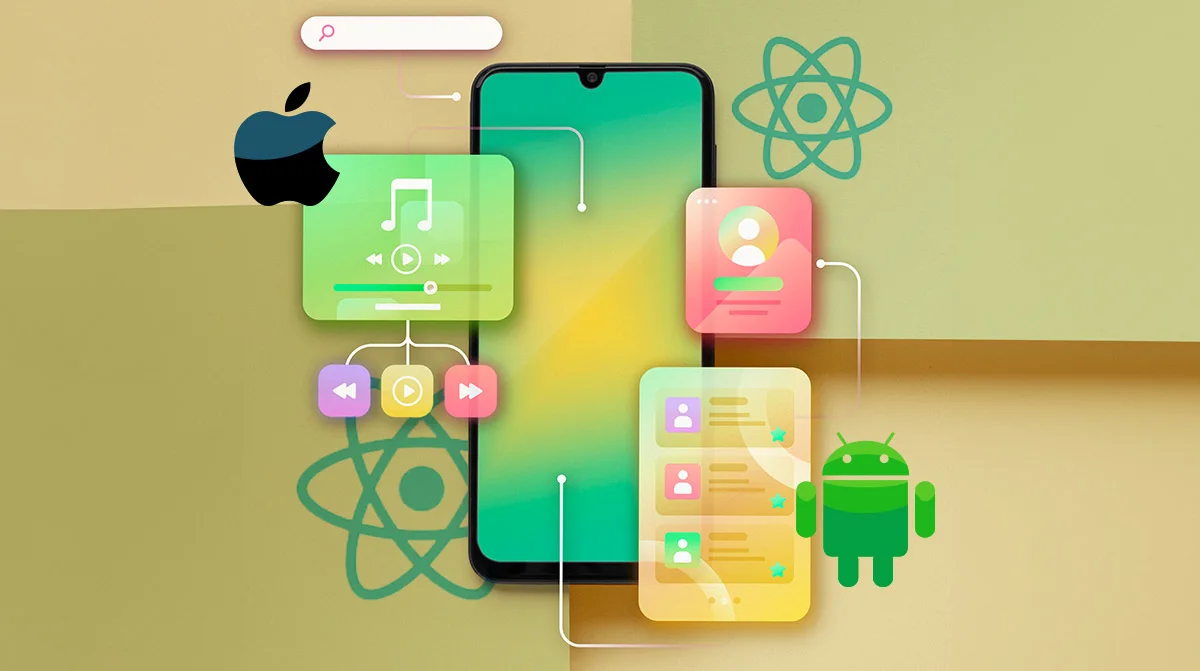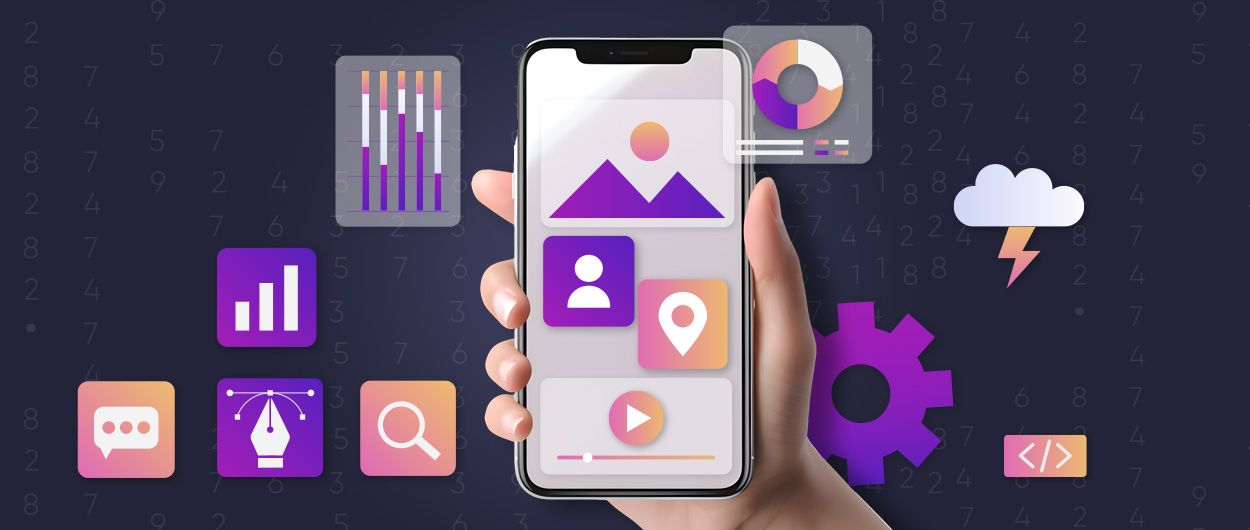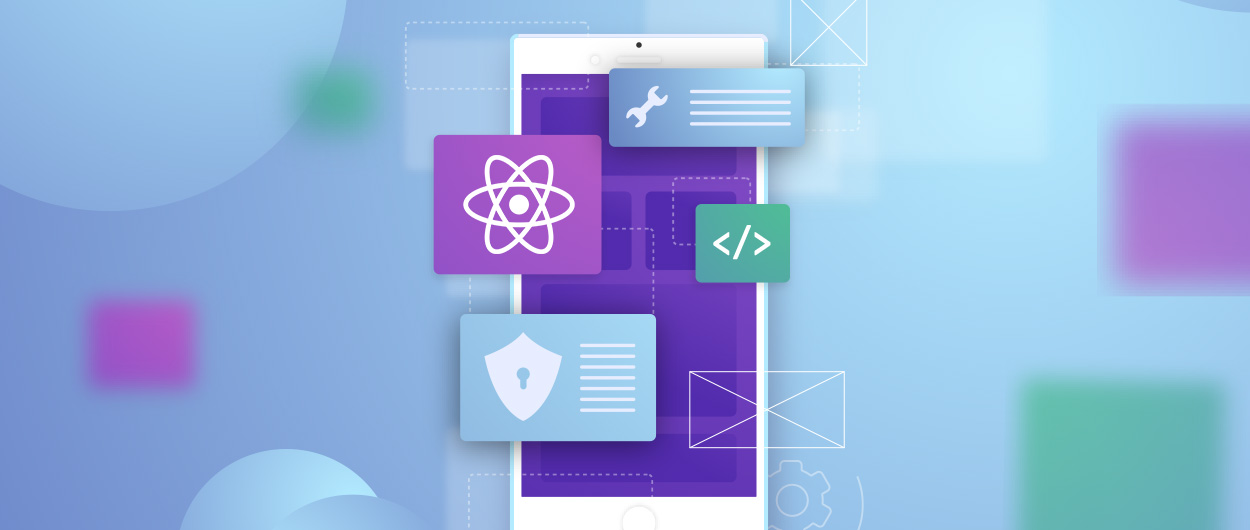In mobile app development, a critical question has long been whether to opt for native or cross-platform solutions. Native development is known for its outstanding performance and full access to device-specific features. However, the necessity of managing separate codebases for iOS and Android can create significant hurdles. Lengthy and resource-intensive processes often lead to challenges for businesses seeking to grow efficiently, making professional mobile app development services essential for delivering scalable, high-quality apps across platforms.
React Native has emerged as a powerful solution. It permits developers to use a single JavaScript codebase to build native applications for both major mobile platforms. Its “learn once, write anywhere” philosophy has enabled companies to accelerate development cycles and reach a broader audience faster.
According to the 2024 Stack Overflow Developer Survey, React Native is used by 27.2% of all professional developers, solidifying its place in the mobile development ecosystem. However, as the ecosystem matures, the focus is shifting from simple efficiency to pushing the boundaries of what a cross-platform framework can do.
This blog explores the exciting new paradigm of React Native, where the core framework is being completely re-architected to deliver performance and feature parity with native apps. We’ll dive into the upcoming features that will transform how developers build applications and, more importantly, examine the revolutionary role that AI is beginning to play in every aspect of the development lifecycle, from code generation to advanced debugging.
The New Architecture: A Leap Forward
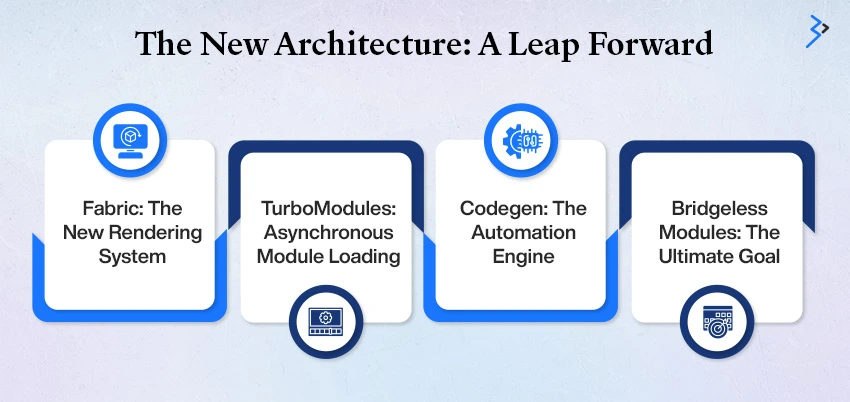
For years, React Native’s architecture, while effective, had some limitations, particularly when it came to performance and seamless integration with native modules. The “bridge,” which facilitates communication between JavaScript and native code, could sometimes become a bottleneck, leading to potential performance issues.
To address this, the React Native team embarked on an ambitious journey to rebuild the framework’s core from the ground up, an initiative known as the New Architecture. This major overhaul isn’t just an update; it’s a fundamental shift that promises to unlock a new level of power and efficiency. For businesses investing in React Native App Development Services, this transformation opens the door to faster performance, greater scalability, and more reliable cross-platform solutions.
1. Fabric: The New Rendering System
Fabric is the new rendering engine for React Native. Unlike the old system, which relied on the JavaScript bridge, Fabric enables the UI to be rendered directly on the native side. There is no more back-and-forth communication for every UI update. The result is a more fluid, responsive, and performant user experience, especially with complex animations and gestures. The change brings React Native closer to the feel of a purely native application.
2. TurboModules: Asynchronous Module Loading
The old bridge loaded all modules synchronously, which could slow down app startup time. TurboModules enable the lazy and asynchronous loading of native modules. An app only loads the modules it needs when it needs them, leading to significantly faster app launch times. For a user, this translates to an app that feels instant and responsive when they tap the icon.

3. Codegen: The Automation Engine
Codegen is a tool that automates the creation of “JS interfaces” from native modules. Previously, developers had to manually write code to define how JavaScript and native modules would communicate, a time-consuming process prone to human error. Codegen automatically generates this boilerplate code, ensuring type safety and consistency. Integrating native modules with a React Native app becomes simpler, faster, and more reliable.
4. Bridgeless Modules: The Ultimate Goal
The long-term vision is a “bridgeless” architecture where native modules can be called directly from JavaScript without an intermediary. The solution will deliver the ultimate level of performance and developer flexibility. It will enable React Native to utilize the power of the device’s native capabilities.
AI Integration: The Development Co-Pilot
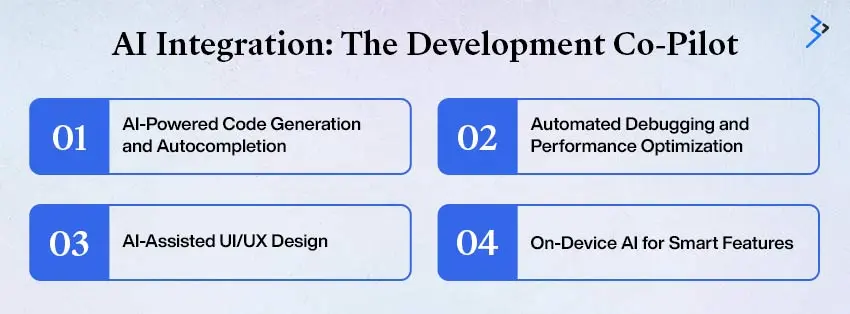
While the new architecture improves the framework, artificial intelligence is revolutionizing the development process around it. AI is no longer a futuristic concept; it is becoming an indispensable tool that streamlines workflows, reduces errors, and augments developer capabilities.
A 2024 study of nearly 5,000 developers revealed that those using AI tools like GitHub Copilot saw a 26% boost in productivity, effectively turning an 8-hour workday into 10 hours of output.
1. AI-Powered Code Generation and Autocompletion
AI assistants like GitHub Copilot are already a reality. For React Native, a developer can write a simple comment like creating a button component with a pulsing animation, and the AI can generate the complete JSX code, including styling and animation logic.
Automating these tasks saves much time on repetitive work and allows developers to focus on the application’s core business logic. Generating entire screens or complex data-fetching logic based on a simple prompt is possible.
In fact, some reports indicate that as much as 41% of all code written is now AI-generated.
2. Automated Debugging and Performance Optimization
Identifying bugs and performance bottlenecks in an extensive application is a common challenge. AI can analyze code and app performance data to pinpoint the exact line of code causing an issue.
A study by IBM reveals that AI-driven tools can help identify and fix bugs earlier in the development cycle. Imagine an AI assistant monitoring your app’s memory usage and automatically suggesting ways to optimize a component causing a memory leak. It can also analyze user flow data to identify and suggest optimizations for slow-loading screens, which would be incredibly difficult for a human to do manually.
3. AI-Assisted UI/UX Design
The barrier between design and development is blurring. Generative AI models can now create React Native components directly from a static design or a simple text description. A designer could upload a Figma mockup, and an AI could generate the React Native code, complete with styling, layout, and responsive design logic. The acceleration of the handoff process ensures that the final product is a pixel-perfect design representation.
4. On-Device AI for Smart Features
The integration of AI isn’t just for developers; it’s for the end users as well. React Native applications can now be built to incorporate on-device machine learning models for features requiring real-time processing and not needing a server connection. This includes:
- Image and Object Recognition: An app instantly identifies a plant from a photo or scans a product’s barcode.
- Natural Language Processing (NLP): Building a chatbot that understands user intent without sending data to the cloud.
- Facial and Gesture Recognition: Creating interactive experiences and games that respond to a user’s movements.
The capability opens up a new world of possibilities for creating innovative, privacy-first applications.
Redefining the Developer’s Role
The rise of AI isn’t about replacing developers; it’s about elevating their role from manual code-writers to strategic problem-solvers. AI can now automate the repetitive tasks that once took up a significant portion of a developer’s day.
Freeing human creativity and mental energy paves the way for more complex and impactful work. Developers can focus on high-level architecture, intricate business logic, and innovative user experiences. The focus shifts from how to write the code to what to build.
AI can also act as a powerful educational tool. An AI assistant can provide instant, context-aware suggestions and explanations for a developer learning a new library or framework.
It can help bridge the gap for junior developers, enabling them to contribute meaningfully from the start and reducing the onboarding time for new team members. A collaborative model that enhances human ingenuity with AI efficiency will drive the next wave of innovation in mobile development.
Read More – Building Cross-Platform Mobile Apps with React Native: A Complete Guide
The Business Impact: Beyond Productivity
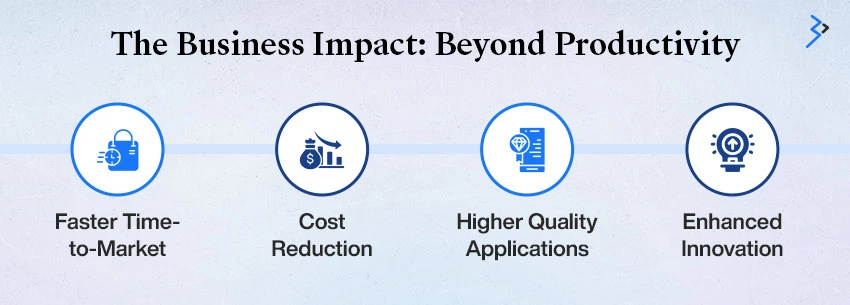
The benefits of combining React Native with AI-powered workflows extend far beyond just technical productivity. For businesses, this convergence translates into a significant competitive advantage.
- Faster Time-to-Market: Accelerating the development process and reducing the need for separate teams for each platform allows companies to bring new features and products to market much faster. Agility is vital in today’s fast-paced digital world, enabling businesses to respond swiftly to market demands and user feedback.
- Cost Reduction: Maintaining a single codebase for iOS and Android significantly lowers development and maintenance costs. AI’s efficiency gains further compound these savings, ensuring businesses can achieve more with a smaller, more focused team. Advanced mobile development is becoming accessible to a broader range of companies, from startups to large enterprises.
- Higher Quality Applications: With AI-assisted debugging and code optimization, applications are less prone to errors and performance issues. A more stable, reliable, and enjoyable user experience leads to higher retention and a positive brand perception. As noted by IBM, early bug identification saves time and the significant financial costs associated with post-release fixes.
- Enhanced Innovation: When we relieve developers of mundane tasks, they gain more time to experiment, iterate, and innovate. Fostering a culture of creativity helps develop distinctive and innovative features that differentiate a product from its competitors. The integration of on-device AI, for example, allows for entirely new categories of apps that leverage local data for intelligent, personalized experiences without compromising user privacy.
Conclusion: A Smarter, Faster Future
Two transformative forces are shaping the future of mobile development: React Native’s new architecture and AI’s capabilities. The re-architected framework removes earlier limitations, enabling apps that are faster, more stable, and nearly indistinguishable from native experiences.
Meanwhile, AI is reshaping the development process, serving as a co-pilot that automates repetitive tasks, reduces errors, and fuels innovation with intelligent, data-driven insights.
For businesses, this convergence translates into shorter development cycles, reduced costs, and the ability to create AI-powered features that were unimaginable just a few years ago.
At Brainvire, we embrace this new era by combining our deep expertise in mobile development with AI-driven innovation. We help brands build future-ready applications that deliver performance, efficiency, and competitive advantage.
FAQs:-
The new architecture replaces the traditional JavaScript bridge with Fabric, TurboModules, and Codegen, enabling faster rendering, asynchronous loading, and more reliable integration with native modules. This upgrade makes React Native apps feel almost identical to fully native apps in terms of speed and responsiveness.
AI acts as a co-pilot for developers by generating code, suggesting optimizations, automating debugging, and even converting designs into ready-to-use components. This reduces development time, minimizes human error, and allows teams to focus on innovation instead of repetitive coding tasks.
Yes. By combining a single cross-platform React Native codebase with AI-driven automation, businesses save on development and maintenance. AI further lowers costs by catching bugs early, reducing post-release fixes, and streamlining design-to-code workflows.
On-device AI enables real-time features such as image recognition, barcode scanning, voice assistants, chatbots, facial recognition, and gesture-based interactions. These features work directly on the device, ensuring faster response times and enhanced privacy.
Brainvire combines expertise in React Native’s new architecture with AI innovation, helping businesses create future-ready apps that are fast, scalable, and intelligent. By aligning technology with business goals, Brainvire ensures shorter development cycles, reduced costs, and unique app experiences that stand out in the market.
Related Articles
-
Building Cross-Platform Mobile Apps with React Native: A Complete Guide
Think about the last time you downloaded an app. Was it built for iOS or Android? Probably not. Users expect seamless experiences regardless of their device, and that’s precisely where
-
Boosting App Performance: Top React Native Optimization Strategies
Improving app performance is essential to providing a smooth user experience, and React Native is a notable mobile development framework. This post examines excellent optimization techniques to improve the performance
-
Building Your First React Native App: A Step-by-Step Guide
It’s a thrilling trip to start developing your first React Native application. This detailed guide is intended to serve as your compass, guiding you through the procedure in an understandable


